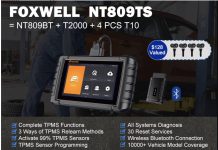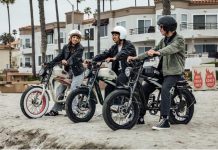If you love taking off on a long road trip, you’ll need to pad your motorcycle for extra comfort behind the wheel. Driving for hours on end on a motorcycle isn’t the same as driving a car. Stopping and starting can be a pain when you’re on your bike. All that riding can also leave you winded as you fight against the elements and added wind resistance. Without these modifications, there’s a good chance you’ll need to pull over every hour or so to take a drink, look at your phone, or make sure your legs don’t go numb from all the vibrations and lack of circulation.
Use these tips to stay comfortable on your motorcycle when traveling long distances:
Pad Your Seat
Nothing will tire you out like an uncomfortable seat. Your rear end will start to get stiff or even go numb as you continue riding for hours on end. Most bikes aren’t known for their comfort and support. That’s why it’s best to install an aftermarket seat with additional padding and support. The seat should also help absorb the vibrations of the bike when you’re traveling at peak speeds. Consider using a seat made with gel-like shock absorbers to soften the blow.
Adjust Your Levers
Most of us don’t pay too much attention to the levers on our bike, but they might be a part of the problem. You should be able to reach the clutch and throttle without bending over or losing your grip on the handlebars. The levers can also get in the way if they come up too high, making it hard to get on and off your bike. Choose the right length of lever based on your position and body size.
Source: Vlad Linev/Shutterstock.com
Use Bluetooth to Stay Connected
Helmet communication is key when it comes to long road trips. You never know when you might need to call your loved ones or ask Siri for directions. You should be able to communicate hands-free without taking your hands off the handlebars, which can be a recipe for disaster. Not having access to your phone can lead to anxiety as you start thinking about who’s trying to reach you. There’s nothing worse than feeling your phone vibrate in your pocket, knowing you can’t pull over for another 30 miles or more.
Use a Bluetooth motorcycle helmet to keep in touch on the road. You can use your voice to access all the features of your smartphone or GPS, so you can keep your eyes on your surroundings. It comes with a built-in headset with Bluetooth speakers for a better listening experience.
Shield Yourself from the Wind
Feeling winded? If your motorcycle doesn’t have a windshield, chances are you’re putting your body through the ringer every time you get on your bike. Air pressure rises to the cube of your speed, which means for every kilometer per hour, the air pressure increases by a multiple of three. You will start to notice the difference once you reach around 30km/h.
Motorcycles aren’t as aerodynamic as cars. Passengers and riders tend to get with added resistance at peak speeds, which starts to consume the motorcycle’s power. Use a windshield to protect yourself from the elements and flying debris. This will also help you improve fuel efficiency so the wind glides off your bike instead of hitting you in the face.
You can also invest in wind resistant riding gear, including jackets, pants, gloves, and a visor to keep the wind flowing off your helmet.
Source: kasarp studio/Shutterstock.com
Keep Your Hand Warm
Your hands tend to do most of the work when riding. If they get cold, you may be slow to respond to what’s happening on the road. You don’t want your hands freezing up when you need to hit the brakes or change gears on a dime.
There are a few things you can do to keep your hands warm other than avoid riding in the dead of winter. Use hand warmers and insulated riding gloves to keep the blood circulating through your hands. You can also install a set of heated grips on your handlebars for additional comfort. They draw power from your bike to keep you warm until you reach your destination.
Stay Hydrated
Staying hydrated can be a challenge when you’re cruising along the highway. Your body needs water regularly throughout the day, or you will start to suffer from drowsiness, fatigue, and nausea, all of which can be extremely dangerous on a motorcycle. Many riders face a dilemma on the road: to drink or not to drink. You need to bring along a pack of water but drinking too often forces you to have to stop and pee.
Experts agree that the average adult needs between 2 to 3 liters (66 to 99 ounces) of water per day. It’s best to use the truck driver method when taking long road trips. Drink 16 to 24 ounces of water before you plan on stopping, so you can unload all at once. Watch out for the signs of dehydration. If you feel tired or lightheaded, stop as soon as possible.
Make things easier on yourself by bringing along a hydration pack. It fights right over your shoulders, and you can wear it underneath your jacket. Just pull the straw towards you when you need a sip.
Put It in a Tank Bag
Keep your personal items within reach by carrying around a tank bag. It fits onto your bike without getting in your way, so you can quickly grab the things you need without having to dismount. You can snap a picture of the scenery, use your phone, or enjoy a quick snack.
Riding shouldn’t be uncomfortable. Use this guide to make the most of your time on your motorcycle.











I never understood the appeal of ape hangers. Seems like they violate at least 3 of the tips in this article. And they make the rider look really stupid too. Yet I see ’em all the time.
Then again, I’m not much of a fan of straight pipes or unbalanced engines either. Probably why I don’t ride. Maybe if I were in Germany or Japan instead of the US&A…
Imagine driving for 30 miles without fiddling with your smartphone? The anxiety. The horror. Good thing there is a Bluetooth in your helmet for better mind contr… er, communications. Safe and effective.
I don’t know if I would be able to concentrate on riding if I had a hydration pack fighting right over my shoulders.